27 apr 2018
|
|
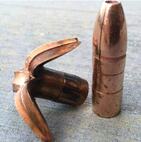
butterfly bullit
Israel is carrying out a murderous assault against protesting Palestinians, with its armed forces killing and maiming demonstrators who pose no imminent threat to them, Amnesty International revealed today, based on its latest research, as the “Great March of Return” protests continued in the Gaza Strip. The Israeli military has killed 40 Palestinians and injured more than 5,000 others – some with what appear to be deliberately inflicted life-changing injuries – during the weekly Friday protests that began on 30 March. Amnesty International has renewed its call on governments worldwide to impose a comprehensive arms embargo on Israel following the country’s disproportionate response to mass demonstrations along the fence that separates the Gaza Strip from Israel. tweet “For four weeks the world has watched in horror as Israeli snipers and other soldiers, in full-protective gear and behind the fence, have attacked Palestinian protesters with live ammunition and tear gas. Despite wide international condemnation, the Israeli army has not reversed its illegal orders to shoot unarmed protesters,” said Magdalena Mughrabi, Deputy Regional Director for the Middle East and North Africa at Amnesty International. “The time for symbolic statements of condemnation is now over. The international community must act concretely and stop the delivery of arms |
and military equipment to Israel. A failure to do so will continue to fuel serious human rights abuses against thousands of men, women and children suffering the consequences of life under Israel’s cruel blockade of Gaza. These people are merely protesting their unbearable conditions and demanding the right to return to their homes and towns in what is now Israel.” tweet
In most of the fatal cases analyzed by Amnesty International victims were shot in the upper body, including the head and the chest, some from behind.
Eyewitness testimonies, video and photographic evidence suggest that many were deliberately killed or injured while posing no immediate threat to the Israeli soldiers. tweet tweet
Doctors at the European and Shifa hospitals in Gaza City told Amnesty International that many of the serious injuries they have witnessed are to the lower limbs, including the knees, which are typical of war wounds that they have not observed since the 2014 Gaza conflict.
Doctors also said that they have observed another type of devastating injury characterized by large internal cavities, plastic left inside the body but no exit wounds.
According to the Ministry of Health in Gaza, as of April 26, the total number of injured is estimated at 5,511 – 592 children, 192 women and 4,727 men – with 1,738 injuries from live ammunition.
Approximately half of those admitted to hospitals suffered injuries to the legs and the knees, while 225 sustained injuries to the neck and head, 142 others were shot in the abdomen and pelvis, and 115 were injured in the chest and the back. So far, the injuries have resulted in 18 amputations. tweet
Four children aged between 14 and 17 are among those killed due to injuries sustained during protests. Two journalists have also been shot dead, despite both wearing protective vests that clearly identified them as members of the press, while several others have been injured.
(Amnesty, PC, Social Media)
In most of the fatal cases analyzed by Amnesty International victims were shot in the upper body, including the head and the chest, some from behind.
Eyewitness testimonies, video and photographic evidence suggest that many were deliberately killed or injured while posing no immediate threat to the Israeli soldiers. tweet tweet
Doctors at the European and Shifa hospitals in Gaza City told Amnesty International that many of the serious injuries they have witnessed are to the lower limbs, including the knees, which are typical of war wounds that they have not observed since the 2014 Gaza conflict.
Doctors also said that they have observed another type of devastating injury characterized by large internal cavities, plastic left inside the body but no exit wounds.
According to the Ministry of Health in Gaza, as of April 26, the total number of injured is estimated at 5,511 – 592 children, 192 women and 4,727 men – with 1,738 injuries from live ammunition.
Approximately half of those admitted to hospitals suffered injuries to the legs and the knees, while 225 sustained injuries to the neck and head, 142 others were shot in the abdomen and pelvis, and 115 were injured in the chest and the back. So far, the injuries have resulted in 18 amputations. tweet
Four children aged between 14 and 17 are among those killed due to injuries sustained during protests. Two journalists have also been shot dead, despite both wearing protective vests that clearly identified them as members of the press, while several others have been injured.
(Amnesty, PC, Social Media)
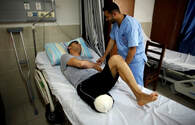
Alaa al-Dali’s leg was amputated after being shot at the Great Return March protests, crushing his dream of participating in the 2018 games
The moment Alaa al-Dali was shot in his right leg by an Israeli sniper, a long sought-after dream came crashing to the ground with him. The 21-year-old cyclist had been training for months to compete in the 2018 Asian Games being held in Indonesia this summer.
“My dream flashed before my eyes as if it had already become a thing of the past,” al-Dali recalled.
He was participating in the protests kicking off the 46-day Great Return March campaign on Land Day, 30 March, calling for Palestinian refugees' right to return to their former homes now inside Israel, when he was shot near the eastern Gaza border fence.
“I knew the moment I was shot and fell to the ground, I knew that I would never be able to ride a bicycle again in my life,” al-Dali told Middle East Eye. “I have been training for months, for at least six hours a day […] to represent my team and raise my country’s flag at the Asian Games.”
After undergoing nine operations, al-Dali’s family was told by doctors that his leg would have to be amputated due to damage to his bones and tissue caused by an alleged "exploding" bullet, which is prohibited by international humanitarian law. It is designed to fragment and explode upon impact, smashing bones and tearing blood vessels.
'I did not even have rocks
'With several awards under his belt, al-Dali, a cyclist from Rafah city in the southern Gaza Strip and member of the Palestinian Motorsport, Motorcycle and Bicycle Federation, had his eye on the prize at the 2018 Asian Games, which will kick off in Jakarta in August.
Last year alone, al-Dali won three local awards, including the bronze medal in Tokyo League 2, a race organised by the Palestinian Olympic Committee in partnership [PDF] with the United Nations Development Programme (UNDP) and the government of Japan.
On 30 March, al-Dali, along with thousands of others, headed to the eastern Gaza border fence to take part in the protests demanding their right of return, 70 years after the Palestinian Nakba (the catastrophe), when more than 750,000 Palestinians were forcibly displaced from their towns and villages in the Palestinian territories in the wake of Israel's establishment in May 1948.
“I rode my bike to the eastern border fence along with three of my friends that day,” he recalled. “I was unarmed. I did not even have rocks. I just stood about 200 metres away from the border fence and got shot with a live bullet right under my knee."
According to the Palestinian Ministry of Health, at least 40 Palestinians have been killed and more than 5,000 others have been injured, while dozens have been left with long-term disabilities since the start of the protests. In the meantime, the UN's human rights chief slammed the Israeli army for the "deplorable" killing of 42 Palestinians in four weeks.
The Israeli army says its forces only open fire on "instigators" or to stop protestors approaching the fence separating the territory from Israel.
However, rights groups have said that Israel is carrying out a policy of deliberately targeting protesters with live fire and using "excessive and lethal force". The Israeli rights groups B'Tselem even launched a campaign earlier this month calling on Israeli soldiers to refuse orders to "open fire on unarmed protestors" in Gaza.
Denied medical treatment by Israel
Al-Dali’s 56-year-old mother, Intisar, said that she had had a bad feeling about the protests and warned al-Dali before he left for the march.
“The Israeli forces do not care if the protesters are peaceful or not. I myself took part in many protests during the first Intifada (uprising) in 1987, and the Israeli soldiers used to shower us with live bullets even when we did nothing but chant,” she said.
Al-Dali remembers arriving at the European Gaza Hospital and waiting five hours before being treated because of the scores of other wounded protesters.
He fell unconscious after losing a lot of blood and was kept in the intensive care unit for two days before undergoing surgery.
According to Intisar, when the family demanded his transfer to a West Bank hospital to have access to better medical treatment and avoid amputation, the Israeli authorities denied him permission to leave.
“The Palestinian Ministry of Health liaison office told us that the Israeli authorities informed them that they would not accept any referral applications for Palestinians wounded during the protests,” she said.
Al-Dali believes that the Israeli authorities purposely denied him, and dozens of others, permission to leave as a form of punishment. “By denying me access to medical treatment, the occupation destroyed everything I have been building for years,” he lamented.
Reuters reported that the Israeli military said that apart from “exceptional humanitarian cases,” medical treatment would not be provided to Palestinians who took part in the protests.
“It was decided that any request for medical treatment by a terrorist or a rioter who took part in violent events would be denied,” an army statement said. “Foreign residents have no vested right to enter Israeli territory, including Palestinians living in the Gaza Strip.”
Israeli army forces have been stationed along the fence separating Gaza from Israel for the past three weeks, using tear gas, snipers firing live ammunition, tank shelling, and air strikes.
Palestinian demonstrators have burned tyres along the border to reduce visibility and have thrown stones and incendiary devices in the direction of Israeli troops.
'Exploding bullet'
Al-Dali’s 25-year-old brother Mohammed says there was a good chance doctors could have saved his brother’s leg if the necessary medical equipment and staff had been available.
Gaza has been suffering a humanitarian crisis as a result of the Israeli-imposed blockade on the Strip since 2007.
Nearly 43 percent of essential medicines in Gaza are at zero stock and “essential life-saving medical equipment has stopped functioning due to the constant fluctuation in the current of electricity,” according to a 2017 report [PDF] by the World Health Organisation (WHO). As a result, Gaza hospitals have been struggling to cope with the mass influx of injuries over the past three weeks.
“To save my brother’s leg, doctors would have spent no less than ten hours performing a very complicated surgery to remove the [bullet’s] fragments. But there were dozens of other young men in need of urgent operations. Spending ten hours to save one person means leaving others to die,” he said.
Ashraf al-Qedra, the spokesman for the Ministry of Health in Gaza, says Israel’s use of exploding bullets reflects its intention to inflict the largest number of casualties among civilians.
“The explosive ammunition causes severe damage and serious injuries that require huge amounts of medical supplies and drugs to treat, and leaves Gaza hospitals completely overwhelmed,” he told MEE. “Dozens of cases will suffer permanent disabilities, as Gaza’s main hospitals lack medical staff and equipment to treat hundreds of cases every day.”
The bullet – prohibited by international humanitarian law – explodes upon impact to cause the most damage possible. This makes it difficult to extract, forcing doctors to resort to amputation. According to Medical Aid for Palestine, surgeons in Gaza have been forced to perform 17 amputations (13 legs and four arms) since 30 March.
“You can imagine how hard it is for someone to be told that their leg was amputated. The only thing helping me achieve my dream…was amputated,” al-Dali said. “The moment they told me that I lost my leg felt like a nightmare. I did not believe this would be a reality that I have to accept and deal with for the rest of my life.”
In a statement in response to Middle East Eye, the Israeli army said that it “employs only standard weapons and ammunition that are lawful under international law”.
Amnesty International has called for a global arms embargo against Israel, accusing its forces of committing war crimes in the Gaza Strip.
Although there was no mention of exploding bullets, the rights group said that the nature of Palestinian protestors' injuries "shows that Israeli soldiers are using high-velocity military weapons designed to cause maximum harm to Palestinian protesters that do not pose imminent threat to them".
"These apparently deliberate attempts to kill and maim are deeply disturbing, not to mention completely illegal. Some of these cases appear to amount to wilful killing, a grave breach of the Geneva Conventions and a war crime," continued Magdalena Mughrabi, Amnesty deputy director for the Middle East and North Africa.
Targeting athletes
Hassan Abu Harb, al-Dali's trainer, had high hopes that al-Dali would win several international awards. “Alaa is one of the best cyclists in Palestine. He won several awards and we were depending on him to represent Palestine in the Asian Games,” Abu Harb said, adding that al-Dali was selected along with two other cyclists to participate in the competition and preparations for his travel had already been underway.
According to Abu Harb, since the beginning of the protests about five other Palestinian athletes in Gaza have lost their legs due to injuries sustained by explosive ammunition, including Muhammed Khalil, a 23-year-old football player, whose leg was also amputated.
Abdul Salam Haniyya, a member of the Supreme Council for Youth and Sports in Palestine, says Israel’s targeting of Palestinian athletes is nothing new.
“The Israeli forces have been systematically targeting Palestinian athletes for years. By using live ammunition and explosive bullets, they are clearly intentionally causing them disabilities,” he said.
According to the Palestinian Ministry of Youth and Sports, 32 athletes were killed and 27 others were injured in the 2014 war launched on the Gaza Strip, including Ahed Zaqout, a Palestinian football player, who was killed after Israeli forces shelled his apartment.
Still, al-Dali says he does not regret taking part in the protests, even if it cost him his leg.
According to al-Dali, his current goal is to travel abroad to replace his leg with an artificial limb and participate in the next Asian Para Games, which is for athletes with disabilities. “Whether I get an artificial limb or not, I will continue my training and work on strengthening my left leg to be able to ride my bike again,” he said.
“I will take [my disability] as a new challenge and depend on my other leg to achieve my dream,” he said.
The moment Alaa al-Dali was shot in his right leg by an Israeli sniper, a long sought-after dream came crashing to the ground with him. The 21-year-old cyclist had been training for months to compete in the 2018 Asian Games being held in Indonesia this summer.
“My dream flashed before my eyes as if it had already become a thing of the past,” al-Dali recalled.
He was participating in the protests kicking off the 46-day Great Return March campaign on Land Day, 30 March, calling for Palestinian refugees' right to return to their former homes now inside Israel, when he was shot near the eastern Gaza border fence.
“I knew the moment I was shot and fell to the ground, I knew that I would never be able to ride a bicycle again in my life,” al-Dali told Middle East Eye. “I have been training for months, for at least six hours a day […] to represent my team and raise my country’s flag at the Asian Games.”
After undergoing nine operations, al-Dali’s family was told by doctors that his leg would have to be amputated due to damage to his bones and tissue caused by an alleged "exploding" bullet, which is prohibited by international humanitarian law. It is designed to fragment and explode upon impact, smashing bones and tearing blood vessels.
'I did not even have rocks
'With several awards under his belt, al-Dali, a cyclist from Rafah city in the southern Gaza Strip and member of the Palestinian Motorsport, Motorcycle and Bicycle Federation, had his eye on the prize at the 2018 Asian Games, which will kick off in Jakarta in August.
Last year alone, al-Dali won three local awards, including the bronze medal in Tokyo League 2, a race organised by the Palestinian Olympic Committee in partnership [PDF] with the United Nations Development Programme (UNDP) and the government of Japan.
On 30 March, al-Dali, along with thousands of others, headed to the eastern Gaza border fence to take part in the protests demanding their right of return, 70 years after the Palestinian Nakba (the catastrophe), when more than 750,000 Palestinians were forcibly displaced from their towns and villages in the Palestinian territories in the wake of Israel's establishment in May 1948.
“I rode my bike to the eastern border fence along with three of my friends that day,” he recalled. “I was unarmed. I did not even have rocks. I just stood about 200 metres away from the border fence and got shot with a live bullet right under my knee."
According to the Palestinian Ministry of Health, at least 40 Palestinians have been killed and more than 5,000 others have been injured, while dozens have been left with long-term disabilities since the start of the protests. In the meantime, the UN's human rights chief slammed the Israeli army for the "deplorable" killing of 42 Palestinians in four weeks.
The Israeli army says its forces only open fire on "instigators" or to stop protestors approaching the fence separating the territory from Israel.
However, rights groups have said that Israel is carrying out a policy of deliberately targeting protesters with live fire and using "excessive and lethal force". The Israeli rights groups B'Tselem even launched a campaign earlier this month calling on Israeli soldiers to refuse orders to "open fire on unarmed protestors" in Gaza.
Denied medical treatment by Israel
Al-Dali’s 56-year-old mother, Intisar, said that she had had a bad feeling about the protests and warned al-Dali before he left for the march.
“The Israeli forces do not care if the protesters are peaceful or not. I myself took part in many protests during the first Intifada (uprising) in 1987, and the Israeli soldiers used to shower us with live bullets even when we did nothing but chant,” she said.
Al-Dali remembers arriving at the European Gaza Hospital and waiting five hours before being treated because of the scores of other wounded protesters.
He fell unconscious after losing a lot of blood and was kept in the intensive care unit for two days before undergoing surgery.
According to Intisar, when the family demanded his transfer to a West Bank hospital to have access to better medical treatment and avoid amputation, the Israeli authorities denied him permission to leave.
“The Palestinian Ministry of Health liaison office told us that the Israeli authorities informed them that they would not accept any referral applications for Palestinians wounded during the protests,” she said.
Al-Dali believes that the Israeli authorities purposely denied him, and dozens of others, permission to leave as a form of punishment. “By denying me access to medical treatment, the occupation destroyed everything I have been building for years,” he lamented.
Reuters reported that the Israeli military said that apart from “exceptional humanitarian cases,” medical treatment would not be provided to Palestinians who took part in the protests.
“It was decided that any request for medical treatment by a terrorist or a rioter who took part in violent events would be denied,” an army statement said. “Foreign residents have no vested right to enter Israeli territory, including Palestinians living in the Gaza Strip.”
Israeli army forces have been stationed along the fence separating Gaza from Israel for the past three weeks, using tear gas, snipers firing live ammunition, tank shelling, and air strikes.
Palestinian demonstrators have burned tyres along the border to reduce visibility and have thrown stones and incendiary devices in the direction of Israeli troops.
'Exploding bullet'
Al-Dali’s 25-year-old brother Mohammed says there was a good chance doctors could have saved his brother’s leg if the necessary medical equipment and staff had been available.
Gaza has been suffering a humanitarian crisis as a result of the Israeli-imposed blockade on the Strip since 2007.
Nearly 43 percent of essential medicines in Gaza are at zero stock and “essential life-saving medical equipment has stopped functioning due to the constant fluctuation in the current of electricity,” according to a 2017 report [PDF] by the World Health Organisation (WHO). As a result, Gaza hospitals have been struggling to cope with the mass influx of injuries over the past three weeks.
“To save my brother’s leg, doctors would have spent no less than ten hours performing a very complicated surgery to remove the [bullet’s] fragments. But there were dozens of other young men in need of urgent operations. Spending ten hours to save one person means leaving others to die,” he said.
Ashraf al-Qedra, the spokesman for the Ministry of Health in Gaza, says Israel’s use of exploding bullets reflects its intention to inflict the largest number of casualties among civilians.
“The explosive ammunition causes severe damage and serious injuries that require huge amounts of medical supplies and drugs to treat, and leaves Gaza hospitals completely overwhelmed,” he told MEE. “Dozens of cases will suffer permanent disabilities, as Gaza’s main hospitals lack medical staff and equipment to treat hundreds of cases every day.”
The bullet – prohibited by international humanitarian law – explodes upon impact to cause the most damage possible. This makes it difficult to extract, forcing doctors to resort to amputation. According to Medical Aid for Palestine, surgeons in Gaza have been forced to perform 17 amputations (13 legs and four arms) since 30 March.
“You can imagine how hard it is for someone to be told that their leg was amputated. The only thing helping me achieve my dream…was amputated,” al-Dali said. “The moment they told me that I lost my leg felt like a nightmare. I did not believe this would be a reality that I have to accept and deal with for the rest of my life.”
In a statement in response to Middle East Eye, the Israeli army said that it “employs only standard weapons and ammunition that are lawful under international law”.
Amnesty International has called for a global arms embargo against Israel, accusing its forces of committing war crimes in the Gaza Strip.
Although there was no mention of exploding bullets, the rights group said that the nature of Palestinian protestors' injuries "shows that Israeli soldiers are using high-velocity military weapons designed to cause maximum harm to Palestinian protesters that do not pose imminent threat to them".
"These apparently deliberate attempts to kill and maim are deeply disturbing, not to mention completely illegal. Some of these cases appear to amount to wilful killing, a grave breach of the Geneva Conventions and a war crime," continued Magdalena Mughrabi, Amnesty deputy director for the Middle East and North Africa.
Targeting athletes
Hassan Abu Harb, al-Dali's trainer, had high hopes that al-Dali would win several international awards. “Alaa is one of the best cyclists in Palestine. He won several awards and we were depending on him to represent Palestine in the Asian Games,” Abu Harb said, adding that al-Dali was selected along with two other cyclists to participate in the competition and preparations for his travel had already been underway.
According to Abu Harb, since the beginning of the protests about five other Palestinian athletes in Gaza have lost their legs due to injuries sustained by explosive ammunition, including Muhammed Khalil, a 23-year-old football player, whose leg was also amputated.
Abdul Salam Haniyya, a member of the Supreme Council for Youth and Sports in Palestine, says Israel’s targeting of Palestinian athletes is nothing new.
“The Israeli forces have been systematically targeting Palestinian athletes for years. By using live ammunition and explosive bullets, they are clearly intentionally causing them disabilities,” he said.
According to the Palestinian Ministry of Youth and Sports, 32 athletes were killed and 27 others were injured in the 2014 war launched on the Gaza Strip, including Ahed Zaqout, a Palestinian football player, who was killed after Israeli forces shelled his apartment.
Still, al-Dali says he does not regret taking part in the protests, even if it cost him his leg.
According to al-Dali, his current goal is to travel abroad to replace his leg with an artificial limb and participate in the next Asian Para Games, which is for athletes with disabilities. “Whether I get an artificial limb or not, I will continue my training and work on strengthening my left leg to be able to ride my bike again,” he said.
“I will take [my disability] as a new challenge and depend on my other leg to achieve my dream,” he said.
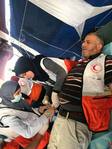
The Palestinian Health Ministry has confirmed that Israeli soldiers killed, Friday, three young Palestinian men, and injured more than 995, including at least 178 who were shot with live fire.
It stated that the first Palestinian who was killed by Israeli army fire, Friday, has been identified as Mohammad Amin al-Moqyd, 21, from Gaza city. His body was moved to the Shifa Medical Center.
The Ministry added that the soldiers also killed Abdul-Salam Bakr, 29, from Khuza’a town, east of Khan Younis, in the southern part of the Gaza Strip.
The third Palestinian who was killed by army fire has been identified as Khalil Na’im Atallah, 22, from Gaza.
In addition, the Health Ministry said the soldiers injured 995 Palestinians, including many who suffered serious wounds. It added that 178 of the wounded were shot with live fire.
175 of the wounded Palestinians were injured in Northern Gaza, 251 in Gaza city area, 200 in Central Gaza, 146 in Khan Younis and 183 in Rafah.
On Friday at night, Israeli war jets fired missiles at a side, believed to be run by a Palestinian resistance group, west of Deir al-Balah in central Gaza.
The army also fired missiles at two Palestinian fishing boats in Gaza port. Media sources in Gaza said the boats are parts of preparations for welcoming an upcoming flotilla to challenge the illegal Israeli siege on Gaza.
The ongoing ‘Great Return March’ protests which started on Palestinian Land Day (March 30th) are meant to bring attention to the fact that millions of Palestinians are imprisoned in the Gaza Strip, unable to return to their homes in what is now Israel. Palestinians make up the largest refugee population on earth.
Israeli troops again opened fire on the unarmed protesters, as they have done each Friday since the protests began on March 30th.
Since March 30th, Israeli forces have killed forty-three Palestinian protesters, and wounded more than five thousand.
An international outcry against the continued shooting of civilian protesters has not reached the US, where politicians have been largely silent on the issue.
Irish and South African politicians have been leading the call for justice for Palestinians, calling the Israeli government an ‘apartheid state’ much like South Africa in the 1980s.
In response to Israel’s fifth straight week of attacking unarmed demonstrators at the border, the UN Commissioner for Human Rights, Zeid Ra’ad al-Hussein, issued a statement that, “The loss of life is deplorable, and the staggering number of injuries caused by live ammunition only confirms the sense that excessive force has been used against demonstrators – not once, not twice, but repeatedly.”
Updated From:
Israeli forces gun down Palestinian protesters in Gaza, Killing 3 and Wounding 611
It stated that the first Palestinian who was killed by Israeli army fire, Friday, has been identified as Mohammad Amin al-Moqyd, 21, from Gaza city. His body was moved to the Shifa Medical Center.
The Ministry added that the soldiers also killed Abdul-Salam Bakr, 29, from Khuza’a town, east of Khan Younis, in the southern part of the Gaza Strip.
The third Palestinian who was killed by army fire has been identified as Khalil Na’im Atallah, 22, from Gaza.
In addition, the Health Ministry said the soldiers injured 995 Palestinians, including many who suffered serious wounds. It added that 178 of the wounded were shot with live fire.
175 of the wounded Palestinians were injured in Northern Gaza, 251 in Gaza city area, 200 in Central Gaza, 146 in Khan Younis and 183 in Rafah.
On Friday at night, Israeli war jets fired missiles at a side, believed to be run by a Palestinian resistance group, west of Deir al-Balah in central Gaza.
The army also fired missiles at two Palestinian fishing boats in Gaza port. Media sources in Gaza said the boats are parts of preparations for welcoming an upcoming flotilla to challenge the illegal Israeli siege on Gaza.
The ongoing ‘Great Return March’ protests which started on Palestinian Land Day (March 30th) are meant to bring attention to the fact that millions of Palestinians are imprisoned in the Gaza Strip, unable to return to their homes in what is now Israel. Palestinians make up the largest refugee population on earth.
Israeli troops again opened fire on the unarmed protesters, as they have done each Friday since the protests began on March 30th.
Since March 30th, Israeli forces have killed forty-three Palestinian protesters, and wounded more than five thousand.
An international outcry against the continued shooting of civilian protesters has not reached the US, where politicians have been largely silent on the issue.
Irish and South African politicians have been leading the call for justice for Palestinians, calling the Israeli government an ‘apartheid state’ much like South Africa in the 1980s.
In response to Israel’s fifth straight week of attacking unarmed demonstrators at the border, the UN Commissioner for Human Rights, Zeid Ra’ad al-Hussein, issued a statement that, “The loss of life is deplorable, and the staggering number of injuries caused by live ammunition only confirms the sense that excessive force has been used against demonstrators – not once, not twice, but repeatedly.”
Updated From:
Israeli forces gun down Palestinian protesters in Gaza, Killing 3 and Wounding 611
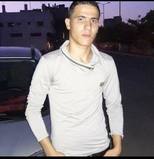
Khalil Na'im Mustafa Atallah, 22
Thousands of Palestinians gathered at the Gaza-Israel border today in several locations in the north, east and south of Gaza, for the fifth week of Friday protests.
Three Palestinians were killed today, and 611 injured by Israeli forces stationed at the border firing both live ammunition and so-called ‘less-than-lethal’ weaponry.
Thousands of Palestinians gathered at the Gaza-Israel border today in several locations in the north, east and south of Gaza, for the fifth week of Friday protests.
Three Palestinians were killed today, and 611 injured by Israeli forces stationed at the border firing both live ammunition and so-called ‘less-than-lethal’ weaponry.
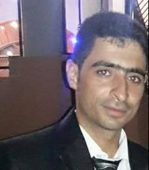
Abdel Salam Bakr 29
Of the 611 wounded, 154 were struck by live ammunition fired by Israeli soldiers at the border. No Israeli soldiers were wounded.
According to Ashraf al-Qidra of the Palestinian Ministry of Health, 18 medics and medical personnel were among those wounded on Friday.
al-Qidra added that Israeli forces specifically targeted medical service points twice with an unidentified gas east of the al-Bureij refugee camp in central Gaza. This appeared to be a new type of gas that caused those who inhaled it to suffer from severe convulsions. A number of these victims had to be hospitalized.
Of the 611 wounded, 154 were struck by live ammunition fired by Israeli soldiers at the border. No Israeli soldiers were wounded.
According to Ashraf al-Qidra of the Palestinian Ministry of Health, 18 medics and medical personnel were among those wounded on Friday.
al-Qidra added that Israeli forces specifically targeted medical service points twice with an unidentified gas east of the al-Bureij refugee camp in central Gaza. This appeared to be a new type of gas that caused those who inhaled it to suffer from severe convulsions. A number of these victims had to be hospitalized.
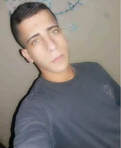
Mohammed Amin Al-Maqid 21
The demonstration is called the ‘Great Return March’, and is meant to bring attention to the fact that millions of Palestinians are imprisoned in the Gaza Strip, unable to return to their homes in what is now Israel.
Palestinians make up the largest refugee population on earth.
Israeli troops again opened fire on the unarmed protesters, as they have done each Friday since the protests began on march 30th.
Since March 30th, Israeli forces have killed forty three Palestinian protesters, and wounded more than five thousand.
An international outcry against the continued shooting of civilian protesters has not reached the US, where politicians have been largely silent on the issue.
Irish and South African politicians have been leading the call for justice for Palestinians, calling the Israeli government an ‘apartheid state’ much like South Africa in the 1980s.
In response to Israel’s fifth straight week of attacking unarmed demonstrators at the border, the UN Commissioner for Human Rights, Zeid Ra’ad al-Hussein, issued a statement that, “The loss of life is deplorable, and the staggering number of injuries caused by live ammunition only confirms the sense that excessive force has been used against demonstrators – not once, not twice, but repeatedly”.
Update: “Israeli Army Kills Three In Gaza, Injures 995”
The demonstration is called the ‘Great Return March’, and is meant to bring attention to the fact that millions of Palestinians are imprisoned in the Gaza Strip, unable to return to their homes in what is now Israel.
Palestinians make up the largest refugee population on earth.
Israeli troops again opened fire on the unarmed protesters, as they have done each Friday since the protests began on march 30th.
Since March 30th, Israeli forces have killed forty three Palestinian protesters, and wounded more than five thousand.
An international outcry against the continued shooting of civilian protesters has not reached the US, where politicians have been largely silent on the issue.
Irish and South African politicians have been leading the call for justice for Palestinians, calling the Israeli government an ‘apartheid state’ much like South Africa in the 1980s.
In response to Israel’s fifth straight week of attacking unarmed demonstrators at the border, the UN Commissioner for Human Rights, Zeid Ra’ad al-Hussein, issued a statement that, “The loss of life is deplorable, and the staggering number of injuries caused by live ammunition only confirms the sense that excessive force has been used against demonstrators – not once, not twice, but repeatedly”.
Update: “Israeli Army Kills Three In Gaza, Injures 995”
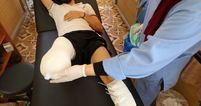
21 wounded citizens underwent amputations in the Gaza Strip due to severe bullet injuries they suffered during their participation in March of Return protests, which have been taking place recently in different border areas.
According to the health ministry in Gaza, four of those wounded citizens had amputations in their upper extremities and 17 others in their lower parts as a result of their exposure to live fire by Israeli soldiers.
Israeli soldiers’ use of live ammunition to attack March of Return protesters in Gaza has rendered 42 Palestinians dead and over 5,000 others wounded since March 30.
According to the health ministry in Gaza, four of those wounded citizens had amputations in their upper extremities and 17 others in their lower parts as a result of their exposure to live fire by Israeli soldiers.
Israeli soldiers’ use of live ammunition to attack March of Return protesters in Gaza has rendered 42 Palestinians dead and over 5,000 others wounded since March 30.
Nakba Day is a commemoration of the expulsion from Palestine in 1948 of an estimated seven hundred thousand Palestinians, and the destruction and depopulation, by Zionist forces, of hundreds of Palestinian towns and villages. During this year’s Great March of the Return, Israeli snipers have killed dozens of Palestinian protesters, and wounded hundreds of others.
As the Nakba Day approaches, there seems to be no relaxation by the Israeli military in its brutal response to these protests.Now, here to discuss with us what is happening on the ground are two representatives of Al-Haq, a human rights organization founded in 1979, and based in the occupied Palestinian territories. Rania Muhareb is a legal researcher with the Palestinian human rights organization, Al-Haq. She holds an LLM in International Human Rights and Humanitarian Law.
She joins us today from Ramallah, in the occupied West Bank. Tareq Zaqoot has worked with Al-Haq as a field researcher in the Gaza Strip since 2008. Over the past 10 years, Tareq has monitored and documented human rights violations perpetrated by both Israel and the Palestinian Authority, and he has covered and documented three Israeli offensives against Gaza. He joins us today from Gaza itself. Thank you very much for coming on the real news, Rania and Tareq.
RANIA MUHAREB: Thank you very much, Dimitri.
DIMITRI LASCARIS: Thank you. Tareq, let’s first talk about the casualty figures up to the current time, and since the beginning of the protests on March 30th. How many Palestinian civilians, according to your work, have been killed and how many have been wounded by the Israeli military in these protests?
TAREQ ZAQOOT: Since March 30th, the number of Palestinians killed has reached thirty-seven, including four children and two journalists. The last journalist died a few hours ago. The number of injuries has reached two thousand and five hundred injured, including about five hundred children and one hundred women. This is in addition to tens of injured among medical staff and journalists.
DIMITRI LASCARIS: And how many journalists have been killed and wounded by the Israeli military in these protests?
TAREQ ZAQOOT: Of course, we are still counting the number of injuries. As of now, we have been able to document some twenty cases of journalists injured.
DIMITRI LASCARIS: And how many casualties, Tareq, have been reported on the side of the Israeli military?
TAREQ ZAQOOT: There is not one injury among the Israeli occupation soldiers, and anyone following the Israeli press will see there is no record whatsoever of injuries among Israeli soldiers.
DIMITRI LASCARIS: Now, Tareq, Doctors Without Borders just released a statement within the last few days, in which it revealed that its doctors have been “receiving patients with unusually severe injuries, many of which are extremely complex to treat. Such serious injuries will leave many of these patients with long term physical disabilities.” Tareq, have you observed or come across evidence that Israeli forces are using ammunition that may be specially designed to inflict particularly severe and debilitating injuries on those who are wounded?
TAREQ ZAQOOT: We have not been able to certify the type of ammunition, as this requires experts in this field. Yet, we have been able to document such cases, the nature of the injuries, and the type of ammunition used. There are serious injuries that we documented through doctors and the collection of tens of affidavits. Live ammunition has caused the laceration of bones and blood vessels. We have twenty-eight cases of amputation of limbs as of now, among them, four children. The nature of the ammunition used is unknown. However, it is causing very serious injury. This is what we’ve seen through our documentation of numerous cases.
DIMITRI LASCARIS: Rania, as I said at the outset, The Great March of Return is intimately related to the aspiration of Palestinian refugees to return to their homeland. Please talk to us about the right of Palestinian refugees to return to their homeland in what is now Israel. What does international law have to say about this subject?
RANIA MUHAREB: Absolutely. The right of Palestinian refugees to return home is well enshrined in international law, and it was even enshrined in customary international law before their displacement in ’48. So, even in 1948, international law already prohibited the massive slashing of civilian populations, and required Israel to ensure the return of Palestinian refugees following the creation of the state. Of course, as you know, on the 11th of December, 1948, the UN General Assembly resolution 194 recognized the right of return of Palestinian refugees, and this resolution, seventeen years later, has been reaffirmed more than a hundred times since, and more than any other resolution in UN history. So, this is just to say that this is a very well entrenched international law, and Palestinian refugees, for seventy years, have been denied the realization of this right.
DIMITRI LASCARIS: Now, Tareq, it’s claimed by the Israeli military that the protests have been organized by Hamas, and that many of those shot were supporters or members of Hamas, and that some or many of the protesters have been throwing rocks at soldiers at the fence. Have you seen evidence that these protests have been organized by Hamas, have you seen any of the protesters engage in any acts of violence, such as rock throwing? How, in general, do you respond to the claims being made by the Israeli military about the organizers of these protests and their relationship to Hamas?
TAREQ ZAQOOT: Okay. March 30th, 2018 is a national commemoration for Palestinians, in which they mark Land Day. That day, the peaceful march began, tens of thousands, all age groups, including children, women, and entire families, located within the Palestinian territory in entirely open areas, close to the border fence. These protests emerged in a spontaneous manner through popular mobilization. How did we get here? The enclosure of the Gaza Strip, eleven years of blockade, and a number of successive crises. The protest leaders former the High National Commission for Great Return March and for Ending the Blockade.
The title of the march is clear, and as announced by the Commission and the protesters, it will continue until May 15th, which is another commemoration day that will mark the seventieth anniversary of the Palestinian Nakba. The protesters want to express their demands, their will, and right of return, in line with United Nations Resolution 194. They consider this their inalienable right, which as of now is yet to be realized.As such, the protests were overall peaceful. We did not observe any armed presence within the protests. As well, the protesters posed no threat whatsoever to the Israeli occupying soldiers. They were peacefully protesting, some waving the Palestinian flag, others chanting national slogans, while some were burning tires in areas close to the border fence. Tens of protesters tried to approach the barbed wire to hang the Palestinian flag on it or to cut pieces of it. When we talk about the barbed wire, it must be noted that there is a main border fence thirty meters from the barbed wire, with Israeli soldiers positioned behind elevated sand hills at least fifty meters within the main border fence. This means there is a large distance between the protesters and the Israeli occupying forces.
DIMITRI LASCARIS: Let’s suppose, just for the purposes of argument, that one or more of these protesters who have approached this fence are, in fact, supporters or even members of Hamas, but that they are unarmed, so that they’re in no position to actually inflict injury upon the soldiers on the other side of the fence. What does international law have to say about how the occupying army can conduct itself in the circumstances? Does the mere fact that an unarmed protester is a member of Hamas confer a right on the occupying army to shoot the protester?
RANIA MUHAREB: As you know, these are peaceful protests, as my colleague has just confirmed. They are peaceful protests of civilians, and even if there are members of Hamas within the protest, the fact of them being unarmed offers them protection under international law. And Israel, as the occupying power, in the policing of a peaceful assembly, such as The Great March of Return, must be guided by the principles of necessity and proportionality in the use of lethal force. This means that the occupying forces may only use lethal force when absolutely necessary, in order to protect life. And this is clearly not the situation that we’re talking about here. And the evidence of this is that the International Criminal Court even came out and said, Israel may be committing war crimes in targeting peaceful civilian protesters in the Gaza Strip. And this is exactly what we are documenting, as well, at Al-Haq. We are documenting excessive use of force, but not only excessive, also premeditated and intentional use of force. This means that there is an actual order given to Israeli soldiers to use the force that we have document. And we see this in the casualties and the types and nature of injuries that my colleagues are discussing and are documenting on the ground.
If I can quote one Israeli official, on the types of orders given to the Israeli occupying forces, and the soldiers that are positioned at the fence- you may know a few days ago on 21st of April, an Israeli brigadier general and former head of the Southern Command of the Israeli occupation forces, discussed in a radio interview how such commands are given. And I quote, he says, “I know how these orders are given, I know how a sniper does the shooting, I know how many authorizations he needs before he receives an authorization to open fire. It is not the whim of one or the other sniper who identifies the small body of a child now, and decides he’ll shoot. Someone marks the target for him very well and tells me exactly why one has to shoot, and what the threat is from that individual. And to my great sorrow, sometimes when you shoot at the small body and you intend to hit his arm or shoulder, it goes even higher.” So, this is just to show that we are dealing with premeditated, intentional use of force, and a shoot to kill policy that we at Al-Haq have been documenting for decades. Which means that Israel’s response to the Great March of Return is none other than intentional commission of willful killings and war crimes, and has nothing to do with the nature of the assembly itself.
DIMITRI LASCARIS: Rania, do you have any reason to believe that the International Criminal Court might actually take action in this particular case?
DIMITRI LASCARIS: So, Al-Haq and partner nations in Gaza, including the Palestinian Center for Human Rights and Al Mezan, have made a submission to the International Criminal Court indicating the names of the victims and the killings that have been perpetrated by the Israeli occupying forces since the 30th of March. We’ve not only indicated the names of those killed, we’ve also indicated an intention to use- an intention to kill, and to shoot to kill Palestinian protesters, which may constitute a war crime of willful killing.We’ve also discussed the injuries that we are documenting, which may amount to the war crime of willfully causing great injury and suffering to civilians. So, this submission has been made to the International Criminal Court on behalf of Palestinian human rights organizations, and we have urged, in the submission, we urged the prosecutor to immediately request the opening of an investigation into the situation.
As you know, the ICC is currently conducting a preliminary examination into alleged war crimes and crimes against humanity being committed. And we hope that, considering the ongoing nature of these crimes, the ICC will take action. But we also urge, of course, third states to impose sanctions on Israel for its continued commission of crimes and grave breaches of the Geneva Conventions.
DIMITRI LASCARIS: The Real News has been speaking today to two researchers of the human rights organization, Al-Haq, which is based in the occupied Palestinian territories. Rania Muhareb and Tareq Zaqoot, thank you very much for joining us today.
RANIA MUHAREB: Thank you.
DIMITRI LASCARIS: And this is Dimitri Lascaris, reporting for The Real News from Montreal, Canada.
04/21/18 Al Mezan and Partners: Briefing Note on Torture and Ill-treatment in the Occupied Palestinian Territory for Side Event, 37th Human Rights Council Session
As the Nakba Day approaches, there seems to be no relaxation by the Israeli military in its brutal response to these protests.Now, here to discuss with us what is happening on the ground are two representatives of Al-Haq, a human rights organization founded in 1979, and based in the occupied Palestinian territories. Rania Muhareb is a legal researcher with the Palestinian human rights organization, Al-Haq. She holds an LLM in International Human Rights and Humanitarian Law.
She joins us today from Ramallah, in the occupied West Bank. Tareq Zaqoot has worked with Al-Haq as a field researcher in the Gaza Strip since 2008. Over the past 10 years, Tareq has monitored and documented human rights violations perpetrated by both Israel and the Palestinian Authority, and he has covered and documented three Israeli offensives against Gaza. He joins us today from Gaza itself. Thank you very much for coming on the real news, Rania and Tareq.
RANIA MUHAREB: Thank you very much, Dimitri.
DIMITRI LASCARIS: Thank you. Tareq, let’s first talk about the casualty figures up to the current time, and since the beginning of the protests on March 30th. How many Palestinian civilians, according to your work, have been killed and how many have been wounded by the Israeli military in these protests?
TAREQ ZAQOOT: Since March 30th, the number of Palestinians killed has reached thirty-seven, including four children and two journalists. The last journalist died a few hours ago. The number of injuries has reached two thousand and five hundred injured, including about five hundred children and one hundred women. This is in addition to tens of injured among medical staff and journalists.
DIMITRI LASCARIS: And how many journalists have been killed and wounded by the Israeli military in these protests?
TAREQ ZAQOOT: Of course, we are still counting the number of injuries. As of now, we have been able to document some twenty cases of journalists injured.
DIMITRI LASCARIS: And how many casualties, Tareq, have been reported on the side of the Israeli military?
TAREQ ZAQOOT: There is not one injury among the Israeli occupation soldiers, and anyone following the Israeli press will see there is no record whatsoever of injuries among Israeli soldiers.
DIMITRI LASCARIS: Now, Tareq, Doctors Without Borders just released a statement within the last few days, in which it revealed that its doctors have been “receiving patients with unusually severe injuries, many of which are extremely complex to treat. Such serious injuries will leave many of these patients with long term physical disabilities.” Tareq, have you observed or come across evidence that Israeli forces are using ammunition that may be specially designed to inflict particularly severe and debilitating injuries on those who are wounded?
TAREQ ZAQOOT: We have not been able to certify the type of ammunition, as this requires experts in this field. Yet, we have been able to document such cases, the nature of the injuries, and the type of ammunition used. There are serious injuries that we documented through doctors and the collection of tens of affidavits. Live ammunition has caused the laceration of bones and blood vessels. We have twenty-eight cases of amputation of limbs as of now, among them, four children. The nature of the ammunition used is unknown. However, it is causing very serious injury. This is what we’ve seen through our documentation of numerous cases.
DIMITRI LASCARIS: Rania, as I said at the outset, The Great March of Return is intimately related to the aspiration of Palestinian refugees to return to their homeland. Please talk to us about the right of Palestinian refugees to return to their homeland in what is now Israel. What does international law have to say about this subject?
RANIA MUHAREB: Absolutely. The right of Palestinian refugees to return home is well enshrined in international law, and it was even enshrined in customary international law before their displacement in ’48. So, even in 1948, international law already prohibited the massive slashing of civilian populations, and required Israel to ensure the return of Palestinian refugees following the creation of the state. Of course, as you know, on the 11th of December, 1948, the UN General Assembly resolution 194 recognized the right of return of Palestinian refugees, and this resolution, seventeen years later, has been reaffirmed more than a hundred times since, and more than any other resolution in UN history. So, this is just to say that this is a very well entrenched international law, and Palestinian refugees, for seventy years, have been denied the realization of this right.
DIMITRI LASCARIS: Now, Tareq, it’s claimed by the Israeli military that the protests have been organized by Hamas, and that many of those shot were supporters or members of Hamas, and that some or many of the protesters have been throwing rocks at soldiers at the fence. Have you seen evidence that these protests have been organized by Hamas, have you seen any of the protesters engage in any acts of violence, such as rock throwing? How, in general, do you respond to the claims being made by the Israeli military about the organizers of these protests and their relationship to Hamas?
TAREQ ZAQOOT: Okay. March 30th, 2018 is a national commemoration for Palestinians, in which they mark Land Day. That day, the peaceful march began, tens of thousands, all age groups, including children, women, and entire families, located within the Palestinian territory in entirely open areas, close to the border fence. These protests emerged in a spontaneous manner through popular mobilization. How did we get here? The enclosure of the Gaza Strip, eleven years of blockade, and a number of successive crises. The protest leaders former the High National Commission for Great Return March and for Ending the Blockade.
The title of the march is clear, and as announced by the Commission and the protesters, it will continue until May 15th, which is another commemoration day that will mark the seventieth anniversary of the Palestinian Nakba. The protesters want to express their demands, their will, and right of return, in line with United Nations Resolution 194. They consider this their inalienable right, which as of now is yet to be realized.As such, the protests were overall peaceful. We did not observe any armed presence within the protests. As well, the protesters posed no threat whatsoever to the Israeli occupying soldiers. They were peacefully protesting, some waving the Palestinian flag, others chanting national slogans, while some were burning tires in areas close to the border fence. Tens of protesters tried to approach the barbed wire to hang the Palestinian flag on it or to cut pieces of it. When we talk about the barbed wire, it must be noted that there is a main border fence thirty meters from the barbed wire, with Israeli soldiers positioned behind elevated sand hills at least fifty meters within the main border fence. This means there is a large distance between the protesters and the Israeli occupying forces.
DIMITRI LASCARIS: Let’s suppose, just for the purposes of argument, that one or more of these protesters who have approached this fence are, in fact, supporters or even members of Hamas, but that they are unarmed, so that they’re in no position to actually inflict injury upon the soldiers on the other side of the fence. What does international law have to say about how the occupying army can conduct itself in the circumstances? Does the mere fact that an unarmed protester is a member of Hamas confer a right on the occupying army to shoot the protester?
RANIA MUHAREB: As you know, these are peaceful protests, as my colleague has just confirmed. They are peaceful protests of civilians, and even if there are members of Hamas within the protest, the fact of them being unarmed offers them protection under international law. And Israel, as the occupying power, in the policing of a peaceful assembly, such as The Great March of Return, must be guided by the principles of necessity and proportionality in the use of lethal force. This means that the occupying forces may only use lethal force when absolutely necessary, in order to protect life. And this is clearly not the situation that we’re talking about here. And the evidence of this is that the International Criminal Court even came out and said, Israel may be committing war crimes in targeting peaceful civilian protesters in the Gaza Strip. And this is exactly what we are documenting, as well, at Al-Haq. We are documenting excessive use of force, but not only excessive, also premeditated and intentional use of force. This means that there is an actual order given to Israeli soldiers to use the force that we have document. And we see this in the casualties and the types and nature of injuries that my colleagues are discussing and are documenting on the ground.
If I can quote one Israeli official, on the types of orders given to the Israeli occupying forces, and the soldiers that are positioned at the fence- you may know a few days ago on 21st of April, an Israeli brigadier general and former head of the Southern Command of the Israeli occupation forces, discussed in a radio interview how such commands are given. And I quote, he says, “I know how these orders are given, I know how a sniper does the shooting, I know how many authorizations he needs before he receives an authorization to open fire. It is not the whim of one or the other sniper who identifies the small body of a child now, and decides he’ll shoot. Someone marks the target for him very well and tells me exactly why one has to shoot, and what the threat is from that individual. And to my great sorrow, sometimes when you shoot at the small body and you intend to hit his arm or shoulder, it goes even higher.” So, this is just to show that we are dealing with premeditated, intentional use of force, and a shoot to kill policy that we at Al-Haq have been documenting for decades. Which means that Israel’s response to the Great March of Return is none other than intentional commission of willful killings and war crimes, and has nothing to do with the nature of the assembly itself.
DIMITRI LASCARIS: Rania, do you have any reason to believe that the International Criminal Court might actually take action in this particular case?
DIMITRI LASCARIS: So, Al-Haq and partner nations in Gaza, including the Palestinian Center for Human Rights and Al Mezan, have made a submission to the International Criminal Court indicating the names of the victims and the killings that have been perpetrated by the Israeli occupying forces since the 30th of March. We’ve not only indicated the names of those killed, we’ve also indicated an intention to use- an intention to kill, and to shoot to kill Palestinian protesters, which may constitute a war crime of willful killing.We’ve also discussed the injuries that we are documenting, which may amount to the war crime of willfully causing great injury and suffering to civilians. So, this submission has been made to the International Criminal Court on behalf of Palestinian human rights organizations, and we have urged, in the submission, we urged the prosecutor to immediately request the opening of an investigation into the situation.
As you know, the ICC is currently conducting a preliminary examination into alleged war crimes and crimes against humanity being committed. And we hope that, considering the ongoing nature of these crimes, the ICC will take action. But we also urge, of course, third states to impose sanctions on Israel for its continued commission of crimes and grave breaches of the Geneva Conventions.
DIMITRI LASCARIS: The Real News has been speaking today to two researchers of the human rights organization, Al-Haq, which is based in the occupied Palestinian territories. Rania Muhareb and Tareq Zaqoot, thank you very much for joining us today.
RANIA MUHAREB: Thank you.
DIMITRI LASCARIS: And this is Dimitri Lascaris, reporting for The Real News from Montreal, Canada.
04/21/18 Al Mezan and Partners: Briefing Note on Torture and Ill-treatment in the Occupied Palestinian Territory for Side Event, 37th Human Rights Council Session

A group of Palestinian youths on Friday morning managed to remove part of the border fence east of Jabalia in the northern Gaza Strip at the beginning of the "Friday of Rebellious Youth" protests, the PIC reporter said.
The Higher National Committee of the Great March of Return and Breaking the Siege called on the Palestinian people in Gaza to intensify their presence in al-Awda (Return) camps near the border fence on Friday.
The Committee affirmed in a press statement that the protests will maintain their peaceful and popular character.
It added that the Great March of Return's main goal is to foil the conspiracies aimed at liquidating the Palestinian cause, particularly the so-called "deal of the century".
The statement hailed the Gazan people taking part in the Great March of Return on a daily basis and praised the Arab masses and the Palestinians in the West Bank and the 1948 occupied territories and abroad who support this movement.
The Great March of Return was first launched on 30th March to demand the Palestinian refugees' right of return and call for an end to the decade-long blockade on Gaza.
So far 42 Palestinians have been killed, including three children and two journalists, and over 5,500 injured as a result of Israel's use of lethal force against peaceful protesters.
The Higher National Committee of the Great March of Return and Breaking the Siege called on the Palestinian people in Gaza to intensify their presence in al-Awda (Return) camps near the border fence on Friday.
The Committee affirmed in a press statement that the protests will maintain their peaceful and popular character.
It added that the Great March of Return's main goal is to foil the conspiracies aimed at liquidating the Palestinian cause, particularly the so-called "deal of the century".
The statement hailed the Gazan people taking part in the Great March of Return on a daily basis and praised the Arab masses and the Palestinians in the West Bank and the 1948 occupied territories and abroad who support this movement.
The Great March of Return was first launched on 30th March to demand the Palestinian refugees' right of return and call for an end to the decade-long blockade on Gaza.
So far 42 Palestinians have been killed, including three children and two journalists, and over 5,500 injured as a result of Israel's use of lethal force against peaceful protesters.
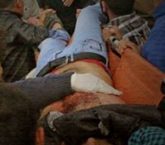
Israeli soldiers shot, on Thursday evening, five Palestinians, during a nonviolent procession on Palestinian lands, in central Gaza, in addition to the southern and northern parts of the coastal region.
Medical sources said the soldiers shot three Palestinians with live fire, east of the al-Boreij refugee camp, in central Gaza.
They added that the soldiers shot one Palestinian with live fire, in Abu Safiyya area, east of Jabalia, in the northern part of the coastal region.
The soldiers also shot one Palestinian with live fire, east of Khan Younis, in the southern part of the coastal region.
Medical sources said the soldiers shot three Palestinians with live fire, east of the al-Boreij refugee camp, in central Gaza.
They added that the soldiers shot one Palestinian with live fire, in Abu Safiyya area, east of Jabalia, in the northern part of the coastal region.
The soldiers also shot one Palestinian with live fire, east of Khan Younis, in the southern part of the coastal region.
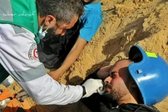
The Palestinian Center for Development and Media Freedoms (MADA) has called for the formation of an independent commission of inquiry, into the killing of Palestinian journalists Ahmed Abu Hussein and Yasser Murtaja, during field coverage of the Return Marches along the borders of Gaza Strip.
Journalist Ahmad Abu Hussein, 25 years old, died on Wednesday after being targeted with an explosive ammunition bullet, fired by Israeli snipers, while covering the “Return March”, east of Jabalia, in the Gaza Strip, 19 days following the killing of Yaser Murtaja (31years), who was also targeted by an Israeli occupation sniper.
MADA center documented at least 12 journalists targeted with live ammunition by Israeli snipers in the Gaza Strip; a grave breach of the fourth Geneva Convention, since the start of the march 30/03/2018, until the evening of 24/4/2018.
Ahmed Abu Hussein, a journalist at the “Sawt Al Sha’b” the Voice of the People radio station in Gaza, was wounded on 13/4/2018. A member of the General Secretariat of the Journalists Syndicate and a colleague of the journalist Abu Hussein in “Sawt Al Sha’b” Voice of the People, journalist Rami Al-Sharafi reported to MADA Center that journalist Abu Hussein, at 2:30 pm on 13/4/2018, was covering the peaceful demonstration hundreds of meters away from the border fence in East Jabalia,. He was identifiable with the “PRESS” vest.
He was targeted by Israeli forces with an explosive live bullet, just below the press vest, which penetrated his left abdomen. He was immediately transferred to the Indonesian hospital, north of Gaza, where he underwent a surgery that lasted 3 and a half hours, in which one kidney, the spleen and part of the pancreas were removed in order to save his life. He was diagnosed with acute bleeding related to aortic artery.
The next day, procedures were started to obtain a permit for him, to be transferred for treatment in Ramallah. He was actually transferred on Monday 16/4, to the Ramallah Medical Complex, where it was found found that he was suffering from toxemia. He underwent another surgery and his health improved until Thursday 18/04, when his health status deteriorated. He was then transferred to the Israeli Hospital Tel Hashomer, were they discovered he has a brain damage that led to Ahmed’s coma, until about 4:15 pm on Wednesday, 25/4, where he was pronounced dead.
The killing of journalist Ahmed Abu Hussein the total number of journalists killed by the Israeli occupation forces to 43, since the beginning of 2000, in the West Bank and Gaza Strip.
The information provided by MADA was based on various data available through a monitoring and documentation unit, regarding the killing of journalists Ahmad Abu Hussein and Yasser Murtaja, and the wounding of 12 other journalists with live ammunition (causing severe injuries, some of the injuries left lifetime physical effects on journalists). this in addition to doubled numbers of partial injuries among journalists.
However, PNN further reports, the culture of impunity enjoyed by the Israeli occupation, and the ongoing target of journalists that goes without accountability, encourage Israeli soldiers to continue to commit these crimes at a fast pace. Therefore, MADA center calls for the formation of an independent commission of inquiry into all these crimes, particularly the killing of journalists, and calls on all international communities to put pressure on Israel, to take real action in demanding the prosecution of perpetrators, and to put an end to acts of impunity that are an incentive for the Israeli army to carry out its flagrant attacks against journalists and against media freedoms in Palestine.
In the photo, the journalist Ahmed Abu Hussein after being targeted by Israeli Occupation Snipers in the field (By Photographer Saber Ashraf).
03/29/18 Israeli Government Issues “Shoot To Kill” Orders in Preparation for Friday Protests
Journalist Ahmad Abu Hussein, 25 years old, died on Wednesday after being targeted with an explosive ammunition bullet, fired by Israeli snipers, while covering the “Return March”, east of Jabalia, in the Gaza Strip, 19 days following the killing of Yaser Murtaja (31years), who was also targeted by an Israeli occupation sniper.
MADA center documented at least 12 journalists targeted with live ammunition by Israeli snipers in the Gaza Strip; a grave breach of the fourth Geneva Convention, since the start of the march 30/03/2018, until the evening of 24/4/2018.
Ahmed Abu Hussein, a journalist at the “Sawt Al Sha’b” the Voice of the People radio station in Gaza, was wounded on 13/4/2018. A member of the General Secretariat of the Journalists Syndicate and a colleague of the journalist Abu Hussein in “Sawt Al Sha’b” Voice of the People, journalist Rami Al-Sharafi reported to MADA Center that journalist Abu Hussein, at 2:30 pm on 13/4/2018, was covering the peaceful demonstration hundreds of meters away from the border fence in East Jabalia,. He was identifiable with the “PRESS” vest.
He was targeted by Israeli forces with an explosive live bullet, just below the press vest, which penetrated his left abdomen. He was immediately transferred to the Indonesian hospital, north of Gaza, where he underwent a surgery that lasted 3 and a half hours, in which one kidney, the spleen and part of the pancreas were removed in order to save his life. He was diagnosed with acute bleeding related to aortic artery.
The next day, procedures were started to obtain a permit for him, to be transferred for treatment in Ramallah. He was actually transferred on Monday 16/4, to the Ramallah Medical Complex, where it was found found that he was suffering from toxemia. He underwent another surgery and his health improved until Thursday 18/04, when his health status deteriorated. He was then transferred to the Israeli Hospital Tel Hashomer, were they discovered he has a brain damage that led to Ahmed’s coma, until about 4:15 pm on Wednesday, 25/4, where he was pronounced dead.
The killing of journalist Ahmed Abu Hussein the total number of journalists killed by the Israeli occupation forces to 43, since the beginning of 2000, in the West Bank and Gaza Strip.
The information provided by MADA was based on various data available through a monitoring and documentation unit, regarding the killing of journalists Ahmad Abu Hussein and Yasser Murtaja, and the wounding of 12 other journalists with live ammunition (causing severe injuries, some of the injuries left lifetime physical effects on journalists). this in addition to doubled numbers of partial injuries among journalists.
However, PNN further reports, the culture of impunity enjoyed by the Israeli occupation, and the ongoing target of journalists that goes without accountability, encourage Israeli soldiers to continue to commit these crimes at a fast pace. Therefore, MADA center calls for the formation of an independent commission of inquiry into all these crimes, particularly the killing of journalists, and calls on all international communities to put pressure on Israel, to take real action in demanding the prosecution of perpetrators, and to put an end to acts of impunity that are an incentive for the Israeli army to carry out its flagrant attacks against journalists and against media freedoms in Palestine.
In the photo, the journalist Ahmed Abu Hussein after being targeted by Israeli Occupation Snipers in the field (By Photographer Saber Ashraf).
03/29/18 Israeli Government Issues “Shoot To Kill” Orders in Preparation for Friday Protests
26 apr 2018
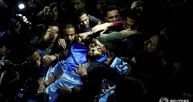
42 Palestinians were killed and over 5,000 others injured by the Israeli occupation forces since the start of the Great March of Return protests on March 30.
According to the Palestinian Health Ministry, 42 Palestinians were killed in Israeli aggressions on the Great March of Return protests staged near Gaza’s border. Two casualties have had their bodies withheld by the Israeli occupation authorities.
Among those injured 3,368 were evacuated to hospitals and 2,143 others received field treatment. 143 cases have been identified as critical and 1,710 others as moderate.
The list of injured Palestinians also included 592 children and 192 women and girls.
According to the ministry’s data, 1,738 protesters were shot with live bullets, 394 with rubber bullets, and 611 others were injured with teargas.
227 protesters were shot in their necks or heads, 440 in their upper body, 115 in their backs and chests, 142 in their abdomens or pelvis, and another 1,704 in their lower limbs.
According to the Palestinian Health Ministry, 42 Palestinians were killed in Israeli aggressions on the Great March of Return protests staged near Gaza’s border. Two casualties have had their bodies withheld by the Israeli occupation authorities.
Among those injured 3,368 were evacuated to hospitals and 2,143 others received field treatment. 143 cases have been identified as critical and 1,710 others as moderate.
The list of injured Palestinians also included 592 children and 192 women and girls.
According to the ministry’s data, 1,738 protesters were shot with live bullets, 394 with rubber bullets, and 611 others were injured with teargas.
227 protesters were shot in their necks or heads, 440 in their upper body, 115 in their backs and chests, 142 in their abdomens or pelvis, and another 1,704 in their lower limbs.
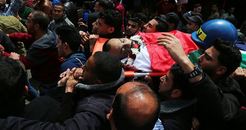
Thousands of mourners Thursday took part in the funeral procession of journalist Ahmad Abu Hussein, who was shot and killed by Israeli forces while covering protests at the Gaza border on April 13.
The body was transferred from hospital to Abu Hussein family house for final Farwell.
The funeral prayer was held at al-Awda Mosque, in the center of Jabalia, amid the presence of national leaders and thousands of people.
The mourners chanted slogans condemning the continuing Israeli violations, which included the unlawful killing of more than 35 Palestinians, including two journalists, in the past four weeks alone.
Democratic Press Gathering said the unlawful killing of the two journalists in Gaza amount to an assassination because they were wearing press jackets at the time they were shot by the Israeli army.
Abu Hussein is the second journalist to be killed by Israeli forces since the beginning of the ongoing Great March of Return protests on the eastern border of the Gaza Strip.
Prior to him, photojournalist Yasser Murtaja was shot dead by the Israeli army on April 6 while he was covering the non-violent protests on the eastern border of the Strip.
The body was transferred from hospital to Abu Hussein family house for final Farwell.
The funeral prayer was held at al-Awda Mosque, in the center of Jabalia, amid the presence of national leaders and thousands of people.
The mourners chanted slogans condemning the continuing Israeli violations, which included the unlawful killing of more than 35 Palestinians, including two journalists, in the past four weeks alone.
Democratic Press Gathering said the unlawful killing of the two journalists in Gaza amount to an assassination because they were wearing press jackets at the time they were shot by the Israeli army.
Abu Hussein is the second journalist to be killed by Israeli forces since the beginning of the ongoing Great March of Return protests on the eastern border of the Gaza Strip.
Prior to him, photojournalist Yasser Murtaja was shot dead by the Israeli army on April 6 while he was covering the non-violent protests on the eastern border of the Strip.
25 apr 2018

Ahmed Abu Hassin 25
The Palestinian photojournalist Ahmed Abu Hassin, who was gravely injured last Friday while covering Gaza’s March of Return, succumbed to his wounds Wednesday afternoon, Palestinian Health Ministry said.
Abu Hassin was shot in the stomach by an Israeli sniper despite the fact that he was stationed at a permissible distance from the border fence.
On Sunday, two days after he was shot, he was transferred to a hospital in Ramallah where he could receive medical treatment.
He was then moved to Israel’s Tel Hashomer hospital due to his serious health situation.
The 25-year-old Abu Hassin is the second journalist to be killed by Israeli fire since the weekly protests at the border started at the end of March.
Yaser Murtaja, 30, was shot and killed while wearing a protective jacket labeled "PRESS" on April 7. Four other journalists were injured by live fire during the demonstrations, one of them critically.
The Palestinian photojournalist Ahmed Abu Hassin, who was gravely injured last Friday while covering Gaza’s March of Return, succumbed to his wounds Wednesday afternoon, Palestinian Health Ministry said.
Abu Hassin was shot in the stomach by an Israeli sniper despite the fact that he was stationed at a permissible distance from the border fence.
On Sunday, two days after he was shot, he was transferred to a hospital in Ramallah where he could receive medical treatment.
He was then moved to Israel’s Tel Hashomer hospital due to his serious health situation.
The 25-year-old Abu Hassin is the second journalist to be killed by Israeli fire since the weekly protests at the border started at the end of March.
Yaser Murtaja, 30, was shot and killed while wearing a protective jacket labeled "PRESS" on April 7. Four other journalists were injured by live fire during the demonstrations, one of them critically.
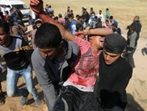
The Palestinian Health Ministry has confirmed that Israeli soldiers injured, Tuesday, nineteen Palestinians in several parts of the Gaza Strip.
It said the Palestinians were participating in the nonviolent “Great March of Return” which started on Palestinian Land Day, on March 30, 2018.
The Health Ministry said the soldiers shot four Palestinians with live fire; two in Khan Younis in southern Gaza, and two in northern Gaza.
It added that fifteen Palestinians suffered cuts and bruises, in addition to the severe effects of teargas inhalation.
On Monday evening, the soldiers shot one Palestinian east of Khan Younis, and abducted four teenage boys, east of the al-Boreij refugee camp, in central Gaza.
Also on Monday, the Palestinian Health Ministry has reported that a Palestinian teenager died from very serious wounds he suffered, on April 1st, after Israeli soldiers shot him during a nonviolent protest near the border fence, in Khuza’a village, east of Khan Younis.
The slain Palestinian, identified as Tahrir Mahmoud Wahba, 18, was shot in the head during a nonviolent procession, and remained in a very serious condition until his death at the European Hospital, in Khan Younis.
It said the Palestinians were participating in the nonviolent “Great March of Return” which started on Palestinian Land Day, on March 30, 2018.
The Health Ministry said the soldiers shot four Palestinians with live fire; two in Khan Younis in southern Gaza, and two in northern Gaza.
It added that fifteen Palestinians suffered cuts and bruises, in addition to the severe effects of teargas inhalation.
On Monday evening, the soldiers shot one Palestinian east of Khan Younis, and abducted four teenage boys, east of the al-Boreij refugee camp, in central Gaza.
Also on Monday, the Palestinian Health Ministry has reported that a Palestinian teenager died from very serious wounds he suffered, on April 1st, after Israeli soldiers shot him during a nonviolent protest near the border fence, in Khuza’a village, east of Khan Younis.
The slain Palestinian, identified as Tahrir Mahmoud Wahba, 18, was shot in the head during a nonviolent procession, and remained in a very serious condition until his death at the European Hospital, in Khan Younis.
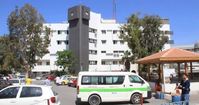
Gaza hospitals can no longer accommodate or provide surgeries for many patients and wounded citizens after they received scores of citizens who suffered injuries during recent protests in border areas.
According to the General administration of hospitals, 4,000 scheduled surgical operations have been postponed due to the heavy pressure on operating rooms and accommodation departments in the health ministry’s hospitals.
Director of the general administration Abdul-Latif al-Hajj said this problem was caused by the large number of citizens transferred to hospitals following their suffering from bullet injuries during their participation in March of Return protests on the eastern border of Gaza.
Hajj added that hospitals also failed to conduct minor surgeries for many patients who only need swift medical care.
According to the General administration of hospitals, 4,000 scheduled surgical operations have been postponed due to the heavy pressure on operating rooms and accommodation departments in the health ministry’s hospitals.
Director of the general administration Abdul-Latif al-Hajj said this problem was caused by the large number of citizens transferred to hospitals following their suffering from bullet injuries during their participation in March of Return protests on the eastern border of Gaza.
Hajj added that hospitals also failed to conduct minor surgeries for many patients who only need swift medical care.
24 apr 2018
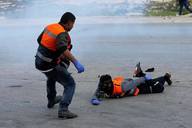
The London-based Palestinian Return Centre (PRC) started a large-scale correspondence campaign to expose to the British and international political community the Israeli human rights violations against the Great March of Return demonstrators.
PRC sent letters to 42 member-states of the Human Rights Council, as well as to more than 600 British MPs, to explain the crimes committed by the Israeli authorities against peaceful demonstrators during the past weeks, which witnessed demonstrations on the border area in Gaza to demand the right of return.
PRC said that Palestinians came out because of the continued siege on the Gaza Strip for more than 11 years, and to urge the international community to recognize and implement the right of Palestinians to return to their homes and lands from which they were displaced in 1948.
PRC called on the UK government to pressure Israel to implement the right of return of Palestinian refugees to their homeland and to publicly condemn Israel's extrajudicial killings.
PRC also called on member states of the Human Rights Council to consider accountability measures against Israel and to send an independent fact-finding mission to investigate Israeli crimes against Palestinians.
The United Nations has called for an inquiry into the killings, which has been denied by Israeli authorities. Four UN experts including Michael Lynk, UN Special Rapporteur on the situation of human rights in the Palestinian Territory occupied since 1967, released a statement condemning the killings by Israeli security forces of Palestinian protesters near the Gaza fence.
Human Rights Watch also concluded that the murder of Palestinians in Gaza was ‘unlawful’ and ‘calculated’ and that Israeli ‘officials green-light shooting of unarmed demonstrators. Israeli soldiers were not merely using excessive force but were apparently acting on orders that all but ensured a bloody military response to the Palestinian demonstrations,” said Eric Goldstein, deputy Middle East director at Human Rights Watch. “The result was foreseeable deaths and injuries of demonstrators on the other side of a border who posed no imminent threat to life.”
Dozens of Palestinians were killed and thousands injured in Israeli aggressions on the Great March of Return protests staged since March 30 along Gaza’s borderlands.
PRC sent letters to 42 member-states of the Human Rights Council, as well as to more than 600 British MPs, to explain the crimes committed by the Israeli authorities against peaceful demonstrators during the past weeks, which witnessed demonstrations on the border area in Gaza to demand the right of return.
PRC said that Palestinians came out because of the continued siege on the Gaza Strip for more than 11 years, and to urge the international community to recognize and implement the right of Palestinians to return to their homes and lands from which they were displaced in 1948.
PRC called on the UK government to pressure Israel to implement the right of return of Palestinian refugees to their homeland and to publicly condemn Israel's extrajudicial killings.
PRC also called on member states of the Human Rights Council to consider accountability measures against Israel and to send an independent fact-finding mission to investigate Israeli crimes against Palestinians.
The United Nations has called for an inquiry into the killings, which has been denied by Israeli authorities. Four UN experts including Michael Lynk, UN Special Rapporteur on the situation of human rights in the Palestinian Territory occupied since 1967, released a statement condemning the killings by Israeli security forces of Palestinian protesters near the Gaza fence.
Human Rights Watch also concluded that the murder of Palestinians in Gaza was ‘unlawful’ and ‘calculated’ and that Israeli ‘officials green-light shooting of unarmed demonstrators. Israeli soldiers were not merely using excessive force but were apparently acting on orders that all but ensured a bloody military response to the Palestinian demonstrations,” said Eric Goldstein, deputy Middle East director at Human Rights Watch. “The result was foreseeable deaths and injuries of demonstrators on the other side of a border who posed no imminent threat to life.”
Dozens of Palestinians were killed and thousands injured in Israeli aggressions on the Great March of Return protests staged since March 30 along Gaza’s borderlands.
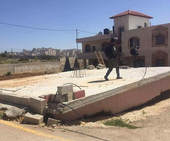
Four Palestinians on Tuesday evening were injured by Israeli gunfire as Israeli occupation forces (IOF) cracked down on the protesters who participated in the events of the Great March of Return which has been going on for the 26th day in a row.
The PIC reporter said that two youths of the wounded were shot east of Khan Younis while the two others were shot east of Jabalya.
The PIC reporter said that two youths of the wounded were shot east of Khan Younis while the two others were shot east of Jabalya.

